
Welcome to the hat trick. This is the phone that won Best Device CES 2011 and is the only one in the world to have three docks out of the gate, one that’s two, for a television and to allow it to connect to the keyboard and a mouse and remote, and another that’s a full fledged laptop. This is a big stepping stone in making smartphones the screens we carry around with us everywhere that also act as our computers we’re going to be able to use for everyday work. Inside there’s a fat NVIDIA dual-core Tegra 2 processor running it’s lovely 4-inch qHD display. Reviewing this phone has been difficult due to the versatility, but we bit the bullet and managed to bring you a solid flat look. NOTE: Don’t worry about the headless Andy, he’s fine, just being modded.
Hardware
A perfectly sized not-too-large and big enough to enjoy sweet HD quality content display is covered with a pane of mega-strong Gorilla Glass. Behind this is a singular strong patterned piece of hard plastic with breaks only for the fingerprint sensor, speaker, and camera. In the center of this back panel is the AT&T logo with the Motorola M logo near the bottom, while on the front is the type-centric Motorola logo with your big four touch-sensitive buttons along the bottom: menu, home, back, and search.
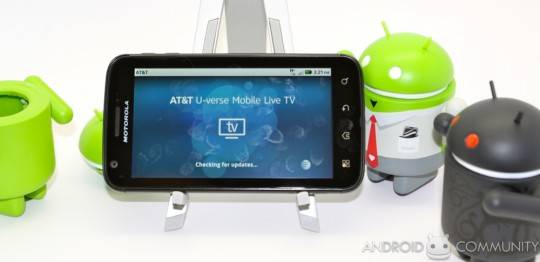
The phone as a whole is 63.5 x 117.75 x 10.95 mm and 135g heavy, with several plugs along the edges. These plugs include a microUSB and HDMI connectors on the bottom left, volume dongle along the right, 3.5mm headphone port and power button along the top. This power button is also the fingerprint scanner that will allow you to lock your phone based upon your unique finger signature. We’ll tell you right now that this scanner is surprisingly accurate, and if you’re unable to make it function because you got your fingers burned off or if you want to give access to someone else, you’ve also cot the option of entering via passcode.
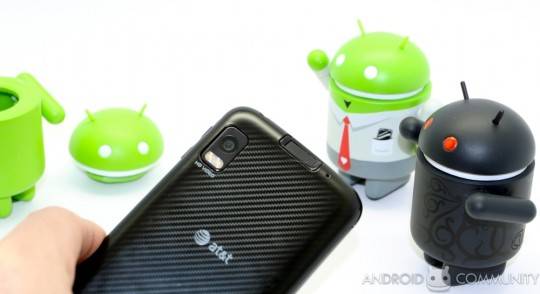
The display is a step up from most of your everyday Android smartphones of the day, at a lovely 4-inch qHD capacitive and 960 x 540 pixel resolution. Calculated down to the pixels per inch, it’s still not quite as sharp as an iPhone 4, but still blasts past the majority of its competitors. On the front above the display is a VGA-resolution webcam, brightness, and proximity sensors, each with the sensitivity and resolution you’ve come to expect from a modern smartphone – not perfect, but definitely much more excellent than any comparable device int he past.
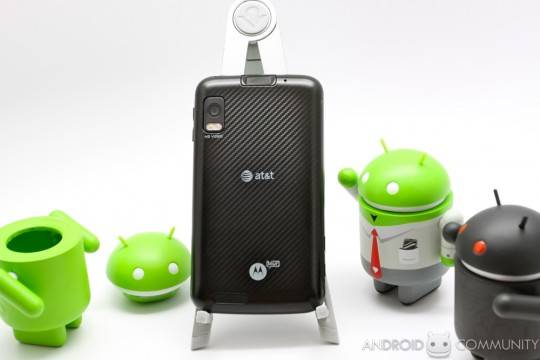
On the back is a not-quite-the-most-powerful 5-megapixel rated camera, but as you’ll see below, it definitely functions well (with its dual-LED flash almost as a bonus.) This camera shoots 720p HD video, so you’re going to want some space – thusly, there is space. Inside you’ll find the NVIDIA Tegra 2 processor with a pair of 1GHz cores and a fat 1GB of DDR2 RAM with 16GB of integrated storage. That’s fat, it’s amazing, it’s more than you’re ever going to need on a normal daily basis. But you can have MORE if you want with the microSD slot that’ll give you an extra 32GB.
This phone connects via AT&T’s HSPA+ “4G” network, quadband GSM/EDGE, Wifi along b/g/n with support for both 5GHz and 2.4GHz bands, plus it’s got Bluetooth 2.1EDR and of course microUSB and HDMI ports. Oh and you want more? How about GPS, accelerometer, and digital compass? Those are in there too.
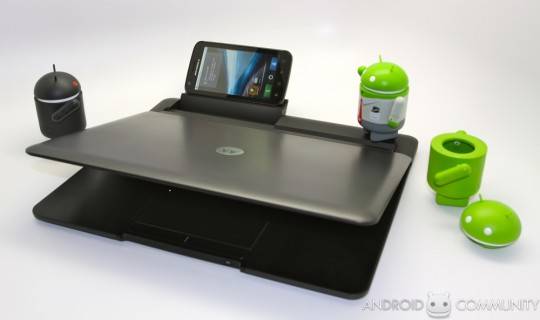
NOTE: Laptop Dock and HD Dock are covered near the end of this review as they should be considered both integral to this phone but also separate should you choose to use it without them.
Software
We begin to get sick to our stomaches when we hear that this phone will be running Android 2.2 Froyo and Motoblur, but quickly become well again and even full of vitality when we find that these things are hardly a stopper on the lovely workings of this otherwise very up-to-date handset. Motoblur, or MOTOBLUR if you prefer, looks ever so slightly nicer than its predecessors – take a look at the post Motoblur Gets an Update if you’d like to see the press release on this brand new version. On the other hand, since we are still hackers and developers at heart, we cry once more when we find that AT&T has continue their limitations on this Android handset, that being the complete stopping of sideloading apps, aka all those apps that you have sitting around that aren’t coming directly from the Android Marketplace.
As for apps that come with the handset, there’s an array of AT&T bits including Navigator, YP Mobile, Code Scanner, and My AT&T as well as a few Motorola deployed offerings which include Quick Office 3.0, Vlingo Voice, Need for Speed, and MobiTV, as well as an app for a company we were sure already went out of business: Blockbuster. Odd.

Then there’s a few Google apps, the list getting long now for how many apps we really need included out of the box, but Google giving some we’d have gotten anyway, take for instance Gmail. As is average with most Android phones released in what would otherwise a very open environment, most of these apps are not allowed to be deleted. You know the way around these locks though, right, developers and hackers? Of course you do. No problem.
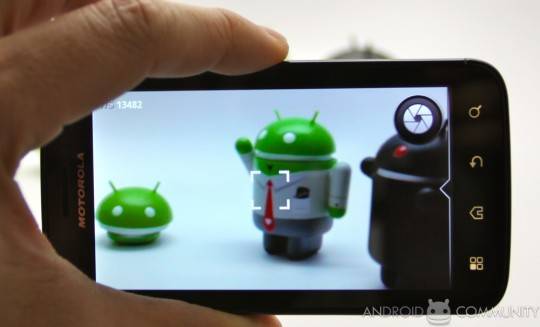
Camera
Leaving something to be desired when you consider the power that could be unleashed with the Tegra 2, this handset takes reasonable photos that could definitely be better had a slightly nicer camera been installed. Photos are alright, considering the fact that everyone will know that you used a mid-range smartphone camera to take them, while the video at 720p is fairly nice, with a 1080p unlock coming down the road we’re told. Again, the Tegra 2 is capable of bringing us much more than we’re given here, though if you’re not in it for the capturing and sharing of images and video, no worries.
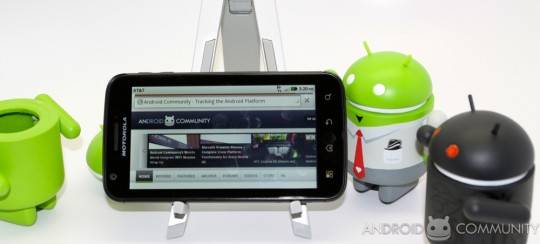
Multimedia
Not quite getting into the dock situation yet, we’ve got to say that display of media, even the not-quite-perfect media captured with the device, is amongst the nicest we’ve seen. This handset supports AAC, H.264, MP3, MPEG-4, WMA9, eAAC+, AMR NB and AAC+ formats with video playback at up to 30fps, a collection of formats you’ll come to appreciate when you’re running through sets of videos passed on to you from wild sources from across the internet – that is, if you’re that sort of person.
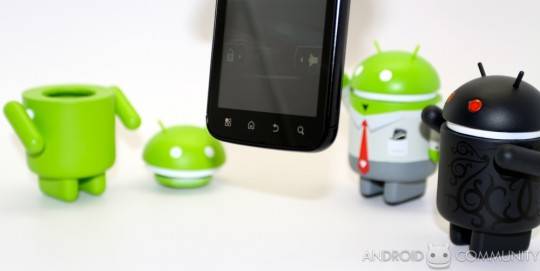
Phone
Noise reduction is the key in this situation, as it’s getting quite difficult to increase the power of voice-to-voice calling at this point in our smartphone history. Solid calls to and fron the ATRIX 4G have been made by us, and speakerphone is really loud and nice.
Data
Not so fast! Very similar to the other AT&T phone we’ve got on hand here, the HTC Inspire 4G, we’ve had some ever so slightly slow downloads and especially uploads. We’ve heard from the source that the HTC Inspire 4G has no HSUPA, (aka 3G upload speed,) and thus is working not on 4G, not on 3G, but at even slower speeds for uploads. Take a peek at the speeds on the Inspire and tell us if you think the same thing is going on here with the ATRIX 4G, which is grabbing right around 1.4 Mbps download and .15 Mbps upload.
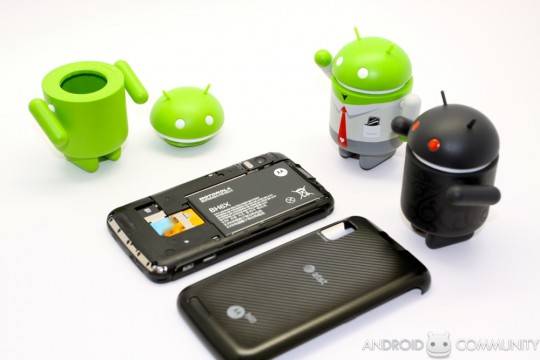
Battery
This handset contains a 1,930 mAh battery direct through Motorola, model number BH6H, giving us right around 13 hours of runtime, that’s with use of several apps, internet browsing, music, and video recording and playback. You will certainly be charging this phone every night when you go to bed, possibly when you’re sitting around working as well, depending on how much you sleep and are awake in a day, of course. Planning on using this phone mostly for Twitter? You’ll probably just need an overnight charge daily.
Laptop Dock
Take a look at our ATRIX 4G Laptop Dock [Review] post to see how it fares against itself and the competition.
HD Dock
Head over to our ATRIX 4G HD Dock [Review] post to see all you’re going to need to know and hear about it.

Cost
The Motorola ATRIX 4G costs $199.99 brand new attached to a 2 year AT&T agreement. If you plan on doing it this way, you’ll have to scoop up both data and call plans, plus if you plan on tethering (like a normal person) you’re going to have to get the most expensive data plan at $45 a month. That with the cheapest voice plan makes this an $84.99 a month handset without any docks or anything. The HD dock costs $129.99, the Bluetooth keyboard costs $69.99. If you want the mouse, you’ll have to buy the “Entertainment Center / Webtop Access Kit” which includes both the HD dock and the keyboard as well as the mouse all for $189.99.
The laptop dock is $299.99 after rebates which total $200 (mail-in and instant.) If you want to buy the laptop dock by itself, that is, if you decide to buy it after you’ve already got the phone, you’ll be paying $499.99 alone. Is it worth it to have this futuristic carry-about phone to computer option? Ah… not sure yet. We’re hoping this all-data carryable around with you option continues with other devices, but this one might be too soon.

Wrap-Up
This is the bigtime innovation phone in many places, but it’s really expensive to offer all of this new options to you as soon as it has. The option to plug your phone into a laptop sort of device is an idea that’s been a longtime coming, and this wont be the last time it’s been implemented. The phone appears to definitely be worth itself on its own with the amount it costs at the moment, but the docks, at least the laptop dock, may have been released too quick. On the other hand, we give props to Motorola for releasing such a dock first. That’s always something worth a high-five over. Buy the phone, wait on the laptop dock, buy the HD dock. Go for it.
Also feel free to see the review our sister-site SlashGear has done for this same set of devices and docks [right here]
[device id=81]


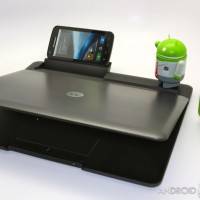

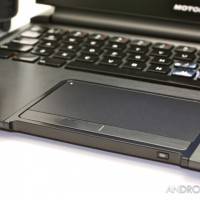

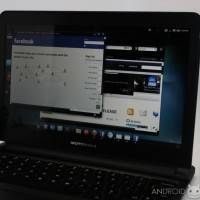

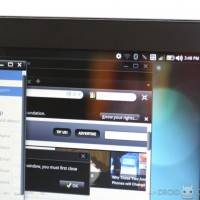

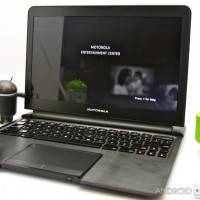
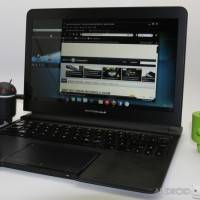
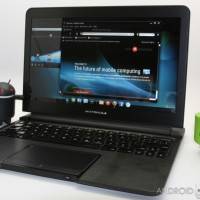
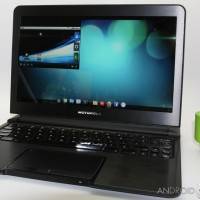

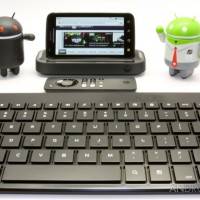
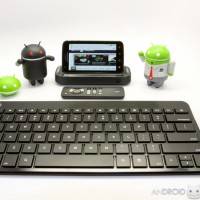
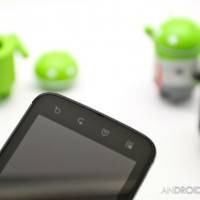

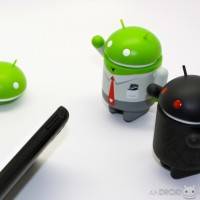
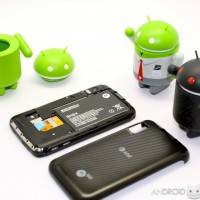
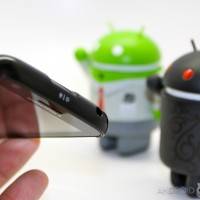
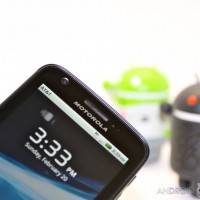

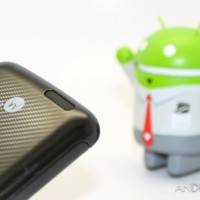

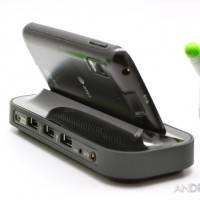
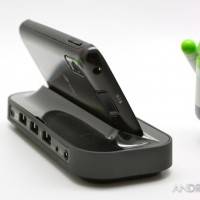


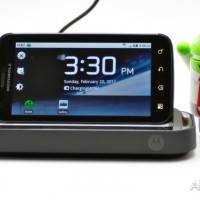

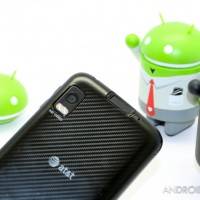

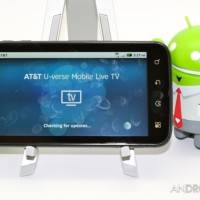
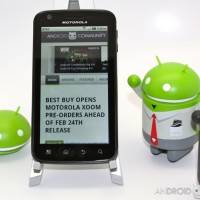

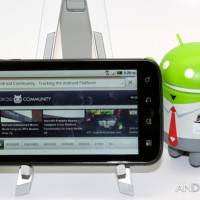
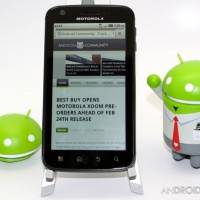
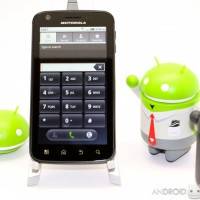
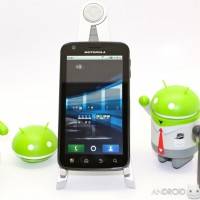
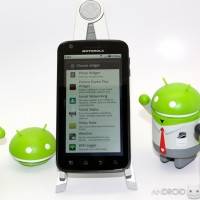
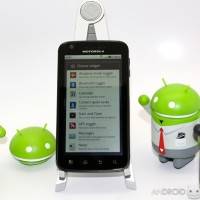
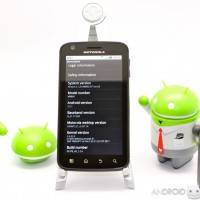
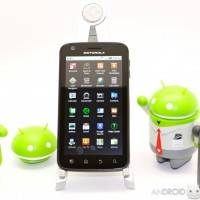
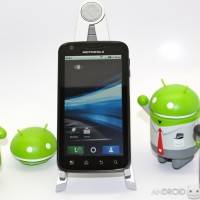
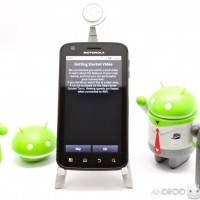
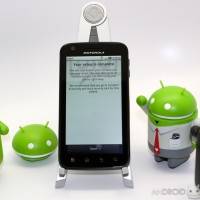
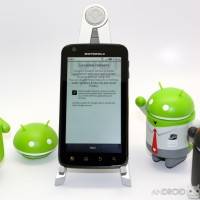
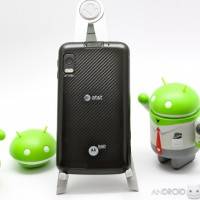


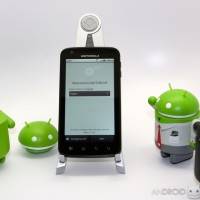

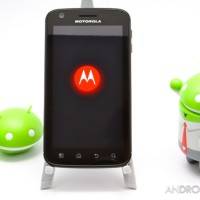
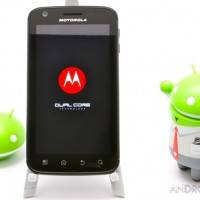








Not having HSUPA enabled does not mean the speeds are anything less than 3G. This review was also very vague with no real detail given on any of the points mentioned.
thanks for the detailed review
It seems that this phone may be a fail in the 4g department.
How did Android+Motoblur actually perform on top of the Tegra2 and the 1GB RAM? Is it any noticeably better than single-core handsets?
Suppose to have Gingerbred 2.3 not Froyo 2.2 ..
Review needs benchmarks, demo videos, examples of photo quality, audio quality measurements etc
Take a look at how GSMArena review phones: http://www.gsmarena.com/lg_optimus_2x-review-564.php
Exactly. Your review words were good but those pictures looked too childish with those android toys everywhere.
Exactly. Your review words were good but those pictures looked too childish with those android toys everywhere.
here is a review, if your stupid enough to buy an android phone on att then go for it!!!
pls, try if usb storage with ntfs is working with it(in hd dock or some other way)
Looks like an amazing phone right now. I am sure competitors will up their game and surpass this phone sooner or later. Would be good to see how this compares to the galaxy s 2.
In terms of benchmarks, it should perform at least as well as the optimus 2x.. and this baby has double the RAM…well done Motorola
“The display is a step up from most of your everyday Android smartphones of the day”
Yet another review that fails to realize this is a PenTile LCD screen; so its effective resolution is less than all other LCD phones (like the Droid 1,2,X) and the RGW grid reduces contrasts and color saturation. Read the Anandtech preview for more information:
http://www.anandtech.com/show/4165/the-motorola-atrix-4g-preview/4
what should i get the atrix or the samsung infuse 4g
I appreciate the review. Is there any reason to believe this phone won’t be able to run Launcher Pro Plus?
I actually have launcher pro plus running on mine. Can’t stand motoblur. Works great.
It has pentile matrix so the real resolution is something like 770×440
I would definitely get this phone (or even the Inspire 4g) if it were capable of downloading and uploading at “4g” speed. Otherwise, I’ll wait until att get their act together and deliver a competitive “4g” service. By that time, vz and tmo already launched 10g
This phone looks like everything we have been waiting for in a Smartphone. I’m glad that there is enough money to push these products since they are so popular. I remember when the HP iPaq was the newest “smart phone” out there with its internal processor like a computer. I like my iPhone but I’ve been considering switching to an Android for the flash capability. Right now even with my iPhone I can get live TV everywhere because I have the Sling box from DISH Network. It goes with my employee service well to give me access to my DVR recordings too. I mostly use my recordings so I don’t miss anything.
Hi I have a very basic question. Will this phone work in Indian 3G network? Please reply at earlier stage.
so far i haven,t Motorola gadgets
http://mobiscreen.net
so far i haven,t Motorola gadgets
http://mobiscreen.net
They come, 100% charged, right out of the box! My recommendation is to hook up the phone. Activate it, then let the battery drain to 5-10%. Or, just down enough, were it will just lock you out until it’s ready to use…
Now, everyday you should let the battery down fully, and charge.
In all honesty though… In my opinion, I don’t let this bother me, and just plug it in at bedtime, even with 20% or more.
Tips:
1) Put the brightness to 50-60%.
2) Turn Off Bluetooth, till you need it!
3) Turn your Vibrate off, and just answer by sound
4) Also, Notification sounds as well.
5) Turn your speaker down to a level that is not so loud, but at comfortable level.
6) If you never use WiFi, while your out, then turn off WiFi.
7) If you want to keep your WiFi, so that you can start receiving from home or work… But, never connect to others networks, then turn (OFF – Ask to Join Networks). So, the phone is not actively searching, and asking, if you would like to join 1,2,3+ 20 networks!
8) Keep the Gaming low / Less Graphically battery draining games. Play solitary….
9) Stay up to date, with all new Apple Updates, that improve some aspects of the phone, that will give you a bit more juice. Hopefully!
I hoped this helped guys!
All I can think of, at the moment.
Read This For More Info: Increase Your Battery Life / Save Your Time!
Take Care!
With-out the docking station the WebTop app will not work. WebTop is the only thing that makes this phone “work like a computer”. If you want to do word processing and spreadsheets on-the-go this is not the phone. If you want to tweet then this is just as good as any. But let’s face it this phone was designed in my opinion to sell APP’s and perpetual devices. (Docking station not included)
I’ve had this phone for the better part of a month now, and am quite
familiar with most of its features. When I was first shopping for a new
phone, I was pretty set on getting an iPhone 4. Though I’m not a big
Apple fan, admittedly, I had a 3G and it was a good phone.
Frustratingly slow at times, yes, but a good phone. In the store, I
tried both this phone and the iPhone 4. Oddly enough, I left the store
still thinking I’d order the iPhone. Boy am I glad I didn’t.
So, head to head, the iPhone is more responsive generally, in two
ways. When changing screens on the home screen, and when going from
portrait to landscape mode, the iPhone is noticeably smoother and
faster. However, in every other respect the Atrix is as fast or faster.
Opening apps, scrolling around, zooming, all are instantaneous and as
smooth as glass on the Atrix.
So, that encompasses everything the iPhone does better, in my experience.
The biggest thing that the Atrix/Android does so, so much better is
in the usefulness of the home screen. In iOS, there are essentially
three ways that you can interact with an application – launching the
application, getting a popup notification, and overlaying a number over
an application that indicates, for example, the unread number of emails
or posts in Facebook.
In Android, there are two dimensions added to this. First, there
are these widgets you hear everyone talk about. These are incredibly
useful. Rather than merely seeing a count of the number of emails that
I have waiting for me, I have a summary of the contents of the emails,
and if I tap on the widget, a miniature version of the messaging app
pops up and I can quickly read through my email.
Another great app I’ve used on both operating systems is Remember
the Milk. In Android, I can add a widget that shows me the contents of
any given list, and tapping on the widget takes me directly to the list
in question. I can also, of course, just add a link to the app itself
as in iOS to my home screen.
These are just a few examples of the customize-ability of this OS.
There are also shortcuts, which provide quick access to certain parts
of applications. For example, I have two navigation shortcuts, one
which takes me to work and one which takes me home. With a single tap,
I am ready to go to work or go home, using the built-in Google
Navigation app.
Which brings me to the richness of the apps built in to this phone.
As mentioned before, it includes a navigation app, which is on par with
all of the standalone GPS units I’ve used. It also includes Swype,
which is a new form of keyboard input for touch screens. This can be
incredibly faster than typing in individual letters once you get used
to it.
The voice command application included, Vlingo, is also of note.
This application is also available for the other major phone operating
systems, but it is included in this case, and is incredibly useful.
Text input is even faster using this app, bringing the usefulness to a
new level. It can be used with any text input box, thanks to the
flexibility of the Android OS.
And, finally, that brings me to the amazing flexibility of this
(mostly) open source OS. Because the OS is open source and well
designed, it is incredibly flexible. Don’t like the default home
screen? Download GO Launcher EX, and you’re given a whole new universe
of customize-ability. Don’t like the default dialer or contact list?
Same thing. Likewise, you can choose which voice command provider you
wish to use, or replace the text-to-speech engine that applications
such as the navigation app use.
Another cool feature, though, I only use it off and on, is the live
wallpaper. Remember how cool it was that the iPhone 3GS could have
wallpapers on its home screen? Well, Android one-ups that with 3D
wallpapers that can show anything from a spinning customizable globe to
the weather, to more abstract wallpapers. They’re fun to play with,
though I stick with the static wallpapers currently due to battery
consumption. Oh, I should also mention that you can easily, through the
settings menu, figure out which apps are taking up the most battery
life. I have nothing to complain about regarding the battery life,
though it’s nothing to write home about.
With iPhone, it’s like you’re a child again and a condescending
adult tells you what is best and makes all of your decisions for you.
With Android, you’re the adult and in charge, with all of the
responsibilities that that entails. I’ve only scratched the surface
here, really, and have yet to find my ideal home screen setup. I really
can’t say enough nice things about this OS. It’s like I’ve turned 18
and have the freedom to do what I want, when I want. I’m an adult.
Anyway, enough about the OS. More about the phone. The fingerprint
sensor is awesome. Once you set it up, you can unlock your phone
practically instantly. No PIN needed. This is a great feature, though
it takes a bit of getting used to. Once you get your swipe down,
though, it seems so archaic to have to actually input a code to unlock
your phone.
The touchscreen is wonderful. It’s quite sensitive, and sometimes I
swear it responds without me even touching it – it’s that good.
Another big plus is that the battery is removable and replaceable.
Though this is irrelevant to me at the moment, it’s a big deal if my
battery ever dies.
The front facing camera is a good idea; I like the idea of
videoconferencing with my phone. There are a few issues here, though,
at the moment. The iPhone clearly wins in this category when compared
to the Atrix. First, the Atrix has problems with audio with VOIP apps.
Basically, it doesn’t work at the moment. This is apparently a firmware
issue, and will allegedly be fixed in the future. In addition, Skype
doesn’t work with video calls, though this is an issue with the
software rather than the phone or OS. So, in a nutshell, don’t get this
phone for videoconferencing in the near future.
In conclusion, this phone is a gift from heaven for any geek. If
you like to customize your gadgets to any degree, or resent the excess
control that other companies exert over your device, this phone is for
you. If you expect to video-conference or have a simple experience
that’s similar to iOS, then this phone may not be for you at the
moment. For me, it’s a 5 star no brainer.